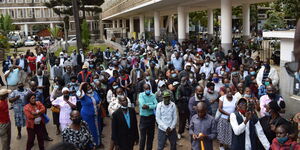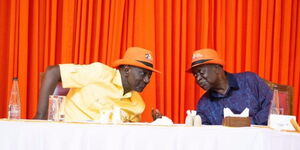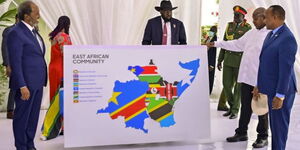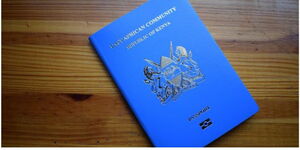Time is an ever-flowing river, but soon everyone on Earth might find themselves with one less second to spare, thanks to human-induced changes influencing the planet's rotation.
A study published in the journal Nature on Wednesday, March 27, has revealed that a leap second, a rare adjustment to global timekeeping, is on the horizon due to the melting polar ice and shifts in Earth's core.
The delicate balance of Earth's rotation, which dictates our hours and minutes, is susceptible to subtle alterations caused by phenomena ranging from changes in the planet's surface to shifts in its molten core.
These minute changes occasionally necessitate the addition of a ‘leap second’ to our clocks to maintain synchrony with the planet's rotation.
For the first time in history, however, scientists anticipate the need to subtract a second.
Patrizia Tavella, from the International Bureau of Weights and Measures in France, highlighted the unprecedented nature of this negative leap second, warning of potential complications in an accompanying article.
The study, led by Duncan Agnew, a geophysics professor at the University of California San Diego, points to the influence of global warming in delaying this time adjustment.
Melting polar ice, a consequence of human activities such as burning fossil fuels, is now seen as a significant factor, pushing the predicted leap second from 2026 to 2029.
“Extrapolating the trends for the core and other relevant phenomena to predict future Earth orientation shows that UTC as now defined will require a negative discontinuity by 2029,” notes the report.
Agnew emphasised the critical role of understanding global warming's impact on timekeeping, underscoring the intricate relationship between Earth's physical changes and the accuracy of our clocks.
The synchronization of time across computers and networks is not just a matter of convenience; it's crucial for the seamless functioning of various systems.
Without accurate time synchronization, the clocks on individual computers can gradually drift apart, leading to discrepancies that could have serious consequences. Imagine a scenario where transactions are logged with timestamps that don't align correctly.
For instance, a transaction generated by a computer with a slightly slower system time might erroneously appear to have occurred before another transaction generated by a faster system, despite the chronological order being the opposite. Such discrepancies can disrupt critical operations and compromise the integrity of the data.
The evolution of timekeeping methods, from the historical reliance on Earth's rotation to the precision of atomic clocks and Coordinated Universal Time (UTC), reflects humanity's quest for accurate measurement. However, the divergence between Earth's rotation and UTC necessitates occasional adjustments to align them, a task that might become more challenging in the face of accelerating changes.
While the slowing effect of melting polar ice on Earth's rotation is noteworthy, the study underscores another significant factor: changes in the Earth's core. Agnew highlighted the core's independent spin, suggesting its pivotal role in regulating Earth's rotation speed.
Despite its technical nature, the implications are profound, especially for systems reliant on precise timekeeping, such as financial markets and communication networks.
The study warns of potential disruptions and the necessity for adjustments in computing systems to accommodate the imminent subtraction of a leap second.
Though the notion of subtracting a second may appear trivial, it underscores the intricate interplay between human activities and the fundamental forces shaping our planet.












